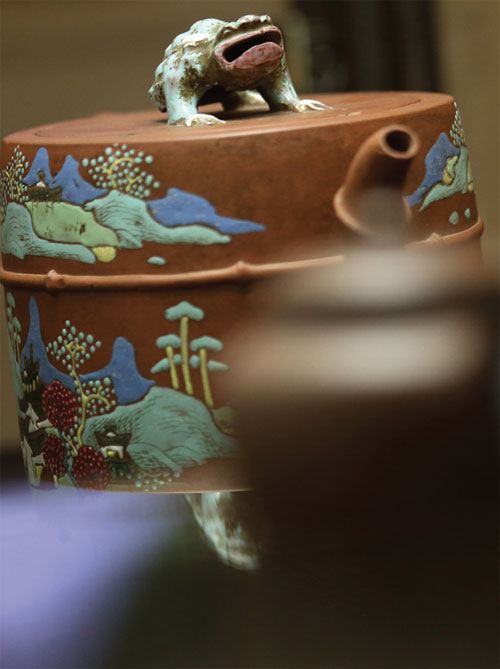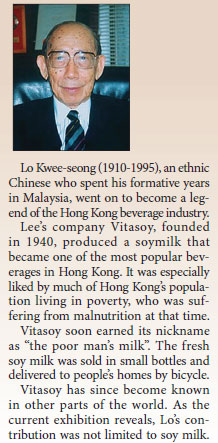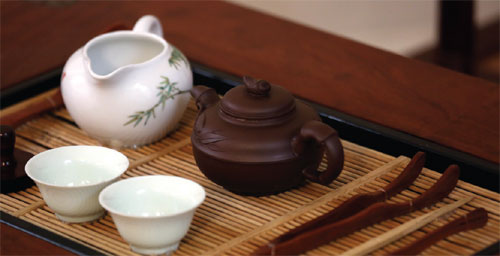Tea ware treat
Updated: 2014-10-22 07:50
By Sylvia Chang in Hong Kong(HK Edition)
|
|||||||||
To Hong Kong residents born here in the 1940s and 50s, Vitasoy would be a familiar name. What's perhaps less known is that Lo Kwee-seong (1910-1995), manufacturer of the much-loved soymilk brand, has left a legacy reflecting his love of an even more enduring Chinese tradition - tea. Lo was an avid collector of tea ware.
The items are on display at an exhibition - "From Soya Bean Milk to Pu'er Tea" - until November 15 at the Flagstaff House Museum of Tea Ware.
Of the 80 sets of tea ware from Lo's collection on display, most are purple clay pots or "zisha teapots" originating in the Song Dynasty (960-1279), near Yixing city, Jiangsu province. The purple clay teapot reached the height of its fame during the early Ming Dynasty (1368-1644).
Most of the crockery, crafted from fired clay, was left unglazed after firing, in order to retain their porous quality. This helped them better absorb the flavor and aroma of the tea. Intricate designs in several colors - purple, red and buff yellow - are painted on the tea ware.
"The 1950s and 1960s were the golden age of tea ware collection in Hong Kong. Lo's collection in that period established the foundation of his future effort to popularize tea ware culture," said Raymond Tang Man-leung, curator on Chinese antiquities of the Hong Kong Museum of Art.
Lo's collection of tea ware began with a serendipitous discovery. In 1950, he saw some ancient teapots in a shopping window at Central and was impressed by their unique shapes and forms. Lo, who served as chairman of the Hong Kong Consumer Council, and the Urban Council and a Legislative Council member, would often talk about tea ware culture with his high-profile acquaintances. This helped build the collection.
After Lo retired in 1978 and handed over his company to his son, he had more time to pursue his interest in tea ware. In the 1990s, he helped organize several touring exhibitions of tea ware across North America.
"Each of the sets on display reflects the unique culture of the time when it was made. We hope that the public can appreciate these art creations and enjoy the history behind them," Tang explained.
sylvia@chinadailyhk.com
|
Lo Kwee-seong (right) began collecting tea ware after antique teapots displayed in a shop window in Central caught his fancy in 1950. |


(HK Edition 10/22/2014 page7)
